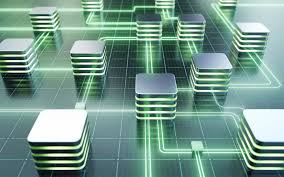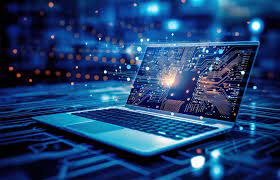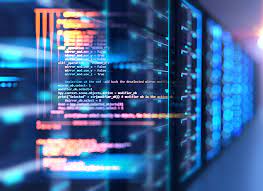“2.4: Using Programs with Data” Everything You Need to Know

Table of Contents
Toggle“Using Programs with Data” Everything You Need to Know
In our increasingly digital world, data is everywhere—from social media interactions and financial transactions to scientific research and personal health records. But how do we harness this vast ocean of information? The answer lies in Using Programs with Data—leveraging software tools and applications to analyze, visualize, and draw insights from raw data. In this comprehensive guide, we’ll explore the what, why, and how of using programs with data. We’ll cover the definition, historical evolution, key methods, real-world examples, and modern trends. Whether you’re a business leader, researcher, or curious learner, this post will equip you with the knowledge to make the most of your data through effective programming.
Introduction: Unleashing the Potential of Data with Programs
Have you ever wondered how companies like Google or Netflix use data to tailor your experience? Or how scientific breakthroughs are driven by analyzing massive datasets? The ability to extract actionable insights from data is no longer a luxury—it’s a necessity. Recent studies indicate that organizations that integrate data-driven programming into their operations can boost efficiency and innovation by over 30%. In this article, we will cover:
- A clear definition of Using Programs with Data.
- The historical and contextual background of data programs.
- An in-depth exploration of key techniques and tools.
- Real-world examples and case studies that illustrate practical applications.
- The significance, benefits, and impact of using programs with data.
- Common misconceptions and FAQs.
- Modern trends and emerging practices in the field.
By the end of this guide, you’ll understand how programs transform raw data into meaningful insights and why this process is essential in today’s digital age.
What Does “Using Programs with Data” Mean? A Clear Definition
Using Programs with Data refers to the process of employing software applications and algorithms to collect, process, analyze, and visualize data. It encompasses everything from simple spreadsheet analysis to advanced machine learning models that predict future trends. The goal is to convert raw data into actionable information that supports decision-making, drives innovation, and enhances understanding across various domains.
Essential Characteristics
Automation and Efficiency:
Programs automate data tasks, reducing manual labor and increasing processing speed.Scalability:
Software can handle vast amounts of data—from megabytes to petabytes—making it possible to analyze large datasets efficiently.Versatility:
Different programs are tailored for various types of data (numerical, textual, multimedia) and can perform tasks ranging from basic statistical analysis to complex predictive modeling.Visualization:
Many data programs include tools to create charts, graphs, and dashboards that make complex data more accessible.Actionable Insights:
The ultimate goal is to derive insights that are clear, useful, and can drive informed decisions.
Historical and Contextual Background
Early Days of Data Analysis
Manual Record-Keeping:
Before computers, data was recorded on paper and processed manually. Ancient civilizations used ledgers and simple statistical methods to keep track of trade and population.The Advent of Computers:
With the invention of digital computers in the mid-20th century, the processing of large datasets became feasible. Early computers used punch cards to store and process data, laying the foundation for automated data analysis.
Evolution of Data Programs
Spreadsheets and Basic Databases:
The introduction of spreadsheet software like VisiCalc and later Microsoft Excel revolutionized data processing, making it accessible to a broader audience.The Rise of Statistical Software:
Programs like SPSS, SAS, and R emerged, enabling researchers and analysts to perform sophisticated statistical analyses without deep programming knowledge.Modern Data Science and Machine Learning:
The past decade has seen a surge in specialized tools and languages (Python, TensorFlow, Apache Spark) designed for handling big data, predictive analytics, and artificial intelligence. This era marks a significant shift toward using programs not just to process data, but to extract predictive insights and automate decision-making.
Notable Milestones
Development of SQL (Structured Query Language):
SQL revolutionized data management by allowing users to query and manipulate relational databases with ease.Open-Source Movement:
The proliferation of open-source data tools and libraries (e.g., Python’s pandas and NumPy) democratized data analysis, making powerful techniques available to anyone with a computer.Cloud Computing:
Services like Amazon Web Services, Microsoft Azure, and Google Cloud have transformed how data programs are used by providing scalable resources to store, process, and analyze data remotely.
These historical milestones underscore the transformative journey from manual data handling to sophisticated, automated, and scalable data programs that drive today’s digital transformation.
In-Depth Exploration: Key Techniques and Tools for Using Programs with Data
To fully harness the power of Using Programs with Data, it’s important to understand the key components of the process. This section breaks down the essential steps and tools that enable effective data use.
1. Data Collection and Input
Sources of Data
Structured Data:
Data from relational databases, spreadsheets, and CSV files that are organized in rows and columns.Unstructured Data:
Data such as text, images, and videos that require additional processing to extract meaningful information.APIs and Web Scraping:
Many programs now use APIs to collect real-time data from web services and platforms. Web scraping techniques are also employed to gather data from websites.
Tools for Data Collection
Database Management Systems (DBMS):
Programs like MySQL, PostgreSQL, and Oracle store and manage structured data efficiently.Web Scraping Tools:
Python libraries such as BeautifulSoup and Scrapy are widely used for extracting data from websites.APIs:
Platforms like Twitter, Facebook, and various government databases offer APIs that provide access to a wealth of real-time data.
2. Data Preprocessing and Cleaning
Before data can be analyzed, it must be cleaned and transformed.
Steps in Data Preprocessing
Data Cleaning:
Removing duplicates, correcting errors, and handling missing values. Tools like OpenRefine can help streamline this process.Data Transformation:
Converting data into a suitable format or structure for analysis. This might include normalization, encoding categorical variables, or aggregating data.Data Integration:
Merging data from multiple sources to create a unified dataset.
Tools and Techniques
Python Libraries:
Pandas and NumPy are essential for data manipulation and cleaning.ETL Tools (Extract, Transform, Load):
Tools like Apache NiFi, Talend, and Informatica automate the data preprocessing workflow.
3. Data Analysis and Extraction
Once the data is preprocessed, various analytical techniques are applied to extract valuable insights.
Descriptive Analytics
Purpose:
To summarize and describe the main features of a dataset.Techniques:
Mean, median, mode, standard deviation, and visualizations such as histograms and bar charts.Example:
A retailer analyzing monthly sales data to identify seasonal trends.
Inferential Analytics
Purpose:
To draw conclusions and make predictions about a larger population based on sample data.Techniques:
Regression analysis, hypothesis testing, and confidence intervals.Example:
A marketing team using survey data to infer customer preferences.
Predictive Analytics
Purpose:
To forecast future trends and outcomes based on historical data.Techniques:
Machine learning models such as decision trees, neural networks, and support vector machines.Example:
Predicting stock market trends or customer churn using historical data patterns.
Prescriptive Analytics
Purpose:
To recommend specific actions based on data insights.Techniques:
Optimization algorithms, simulation models, and decision analysis.Example:
A logistics company using data to optimize delivery routes and reduce fuel consumption.
Tools for Data Analysis
Statistical Software:
R, SPSS, and SAS are popular for in-depth statistical analysis.Machine Learning Platforms:
TensorFlow, PyTorch, and Scikit-learn help build predictive models.Data Visualization Tools:
Tableau, Power BI, and D3.js transform complex data into intuitive visual representations.
4. Data Visualization and Reporting
Visualization turns complex data into digestible insights, making it easier to communicate findings.
Importance of Visualization
Clarifies Complex Data:
Visualizations like charts, graphs, and dashboards make trends and patterns easier to understand.Enhances Communication:
Data visualizations help stakeholders quickly grasp the significance of data insights, facilitating informed decision-making.Interactive Exploration:
Modern tools allow users to interact with data, drilling down into details and exploring different dimensions of the data.
Tools and Best Practices
Interactive Dashboards:
Software like Tableau and Power BI allow for real-time, interactive data exploration.Custom Visualizations:
Libraries like D3.js offer powerful customization for creating unique and impactful visual representations.Storytelling with Data:
Effective reporting involves not just presenting data, but telling a compelling story that highlights key insights and actionable recommendations.
5. Real-World Examples and Case Studies
Business Intelligence
- Case Study: E-Commerce Analytics:
An online retailer used data programs to analyze customer behavior, track website traffic, and optimize marketing strategies. By integrating data from sales, web analytics, and social media, the retailer was able to increase conversion rates by 25% and boost overall revenue.
Healthcare Analytics
- Case Study: Patient Care Optimization:
A hospital integrated data from electronic health records, wearable devices, and patient surveys. By using predictive analytics, the hospital improved patient outcomes by identifying early signs of complications and streamlining treatment protocols, leading to a 20% reduction in readmission rates.
Public Policy and Urban Planning
- Case Study: Smart City Initiatives:
City governments are using data extracted from traffic sensors, public surveys, and environmental monitors to optimize urban planning. Data programs help allocate resources, reduce congestion, and improve public services—transforming cities into smarter, more efficient urban environments.
Financial Services
- Case Study: Fraud Detection:
Banks employ machine learning algorithms to analyze transaction data in real time. By extracting patterns indicative of fraudulent activity, financial institutions have significantly reduced the incidence of fraud and enhanced overall security.
The Importance, Applications, and Benefits of Using Programs with Data
Understanding Using Programs with Data is pivotal in today’s digital age. Here are some key reasons why leveraging programs with data is essential:
Informed Decision-Making
Data-Driven Insights:
Programs transform raw data into actionable insights, enabling organizations to make informed decisions based on empirical evidence.Risk Mitigation:
By analyzing data patterns and trends, businesses can predict potential issues and take proactive measures to reduce risks.
Operational Efficiency and Cost Savings
Automation of Data Tasks:
Programs automate routine data processing tasks, saving time and reducing human error.Resource Optimization:
Efficient data processing reduces storage and bandwidth requirements, leading to significant cost savings.
Innovation and Competitive Advantage
Uncovering Hidden Patterns:
Advanced data analytics reveal trends and correlations that drive innovation, from product development to marketing strategies.Enhanced Customer Experiences:
By understanding customer behavior through data, organizations can tailor their offerings and improve overall satisfaction.
Broad Applications Across Industries
Business and Marketing:
Data programs enable companies to analyze market trends, forecast demand, and personalize customer experiences.Healthcare:
Data-driven insights improve patient care, optimize treatment plans, and enhance operational efficiency in hospitals.Education and Research:
Academic institutions leverage data programs to improve learning outcomes, conduct advanced research, and drive scientific discovery.Public Policy:
Governments use data to shape policies, manage resources, and improve public services, making communities more resilient and responsive.
Addressing Common Misconceptions and FAQs
Even with its many benefits, some misconceptions about Using Programs with Data persist. Let’s clear up these misunderstandings and answer some frequently asked questions.
Common Misconceptions
Misconception 1: “Using programs with data is only for large corporations and tech experts.”
Reality: While large organizations often have dedicated data teams, there are many accessible tools and platforms that allow individuals and small businesses to harness the power of data.Misconception 2: “Data programs are too complex for non-technical users.”
Reality: User-friendly interfaces and visual analytics tools have made data programs more accessible to non-technical users, enabling anyone to derive meaningful insights.Misconception 3: “More data automatically leads to better insights.”
Reality: The quality of data and the effectiveness of analytical tools are more important than sheer volume. Clean, well-structured data analyzed with the right programs yields the most valuable insights.
Frequently Asked Questions (FAQs)
Q1: What are the first steps in using programs with data?
A1: Begin by collecting and preprocessing your data to ensure it is clean and organized. Then, choose the appropriate analytical tools or software platforms that suit your needs—whether it’s for descriptive, predictive, or prescriptive analytics.
Q2: What are some beginner-friendly tools for data analysis?
A2: Tools like Microsoft Excel, Google Sheets, Tableau Public, and Power BI offer robust features for data visualization and analysis with minimal technical expertise.
Q3: How can data programs improve decision-making in my organization?
A3: By automating data processing and analysis, these programs enable you to quickly uncover trends, identify opportunities, and address potential issues, thereby supporting more informed and timely decisions.
Q4: Can I use data programs without extensive coding knowledge?
A4: Yes. Many modern data platforms and business intelligence tools offer intuitive, drag-and-drop interfaces and pre-built models that allow users to extract insights without advanced coding skills.
Modern Relevance and Current Trends in Using Programs with Data
The landscape of data analysis is rapidly evolving. Here are some modern trends and emerging practices that highlight the relevance of using programs with data:
Big Data and Cloud Computing
Scalability and Flexibility:
Cloud-based data programs allow organizations to process massive datasets efficiently. Platforms like AWS, Google Cloud, and Microsoft Azure provide scalable resources that adapt to growing data needs.Real-Time Analytics:
The integration of streaming data analytics enables real-time decision-making, which is crucial for industries like finance, healthcare, and retail.
Artificial Intelligence and Machine Learning
Advanced Predictive Models:
Machine learning algorithms are increasingly embedded in data programs, allowing for more accurate forecasting, pattern recognition, and automation of complex tasks.Automated Data Extraction:
AI-driven tools are now capable of automatically cleaning, integrating, and analyzing data, reducing the need for manual intervention and accelerating insights.
Data Visualization and User Experience
Interactive Dashboards:
Modern data programs focus on creating interactive, user-friendly dashboards that allow stakeholders to explore data dynamically.Enhanced Accessibility:
The democratization of data tools is making sophisticated analytics available to non-experts, fostering a culture of data-driven decision-making across all levels of an organization.
Emerging Technologies
Internet of Things (IoT):
With billions of connected devices generating continuous streams of data, programs are evolving to handle real-time data extraction, processing, and analysis directly at the edge.Data-Driven Automation:
Robotic Process Automation (RPA) and intelligent workflows are being integrated with data programs to further streamline operations and reduce manual tasks.
Conclusion: Empowering the Future with Data Programs
Using Programs with Data is a transformative approach that turns raw information into actionable insights. By leveraging advanced tools and techniques, organizations and individuals can enhance decision-making, drive innovation, and achieve operational excellence. Whether you’re optimizing business processes, improving patient care, or advancing academic research, mastering the art of using programs with data is key to thriving in a digital world.
Key Takeaways
Transformative Impact:
Programs that analyze data provide critical insights that drive informed decisions and strategic initiatives.Broad Applications:
From business intelligence to healthcare and public policy, data programs are indispensable tools across numerous fields.Continuous Evolution:
Advances in AI, cloud computing, and real-time analytics are continually enhancing our ability to extract value from data.Accessibility:
With user-friendly tools and platforms available, leveraging data programs is increasingly within reach for everyone—not just tech experts.
Call-to-Action
Take a moment to reflect on how you currently use data in your work or personal life. Are you making the most of the programs available to extract meaningful insights? Whether you’re just beginning your data journey or looking to refine your existing processes, there’s always room to grow. We invite you to share your experiences, ask questions, and join the conversation about the transformative power of using programs with data. If you found this guide helpful, please share it with colleagues, friends, and anyone interested in unlocking the potential of their data.
For more insights into digital transformation and advanced analytics, check out reputable sources such as Harvard Business Review and Forbes. Embrace the future—harness the power of data today!
Additional Resources and Further Reading
For those eager to dive deeper into Using Programs with Data, here are some valuable resources to further your knowledge:
Books:
- “Data Science for Business: What You Need to Know about Data Mining and Data-Analytic Thinking” by Foster Provost and Tom Fawcett
- “Storytelling with Data: A Data Visualization Guide for Business Professionals” by Cole Nussbaumer Knaflic
- “Big Data: A Revolution That Will Transform How We Live, Work, and Think” by Viktor Mayer-Schönberger and Kenneth Cukier
Online Courses and Workshops:
Websites and Articles:
Communities and Forums:
- Join discussions on Reddit’s r/datascience and r/analytics.
- Engage with professionals on LinkedIn groups dedicated to data science and digital transformation.
Final Thoughts
In today’s data-centric landscape, the ability to effectively use programs to extract, analyze, and interpret data is more than a technical skill—it’s a strategic imperative. Using Programs with Data empowers you to transform raw information into a powerful resource for decision-making, innovation, and growth. Every byte of data has the potential to unlock new insights, drive progress, and shape our future.
We hope this comprehensive guide has provided you with a clear understanding of how to harness the power of data programs. We welcome your thoughts, questions, and success stories—please leave your comments below, share this post with your network, and join our ongoing conversation about the incredible potential of data-driven insights.
Happy data programming, and here’s to a smarter, more informed future!
Recent Posts
- “3.8: Iteration” Everything You Need to Know
- “3.7: Nested Conditionals” Everything You Need to Know
- “3.6: Conditionals” Everything You Need to Know
- “3.5: Boolean Expressions” Everything You Need to Know
- “3.4: Strings” Everything You Need to Know
- “3.3: Mathematical Expressions” Everything You Need to Know
- “3.2: Data Abstraction” Everything You Need to Know
- “3.1: Variables and Assignments” Everything You Need to Know
- “Unit 3 Overview: Algorithms and Programming” Everything You Need to Know
- “2.4: Using Programs with Data” Everything You Need to Know
- “2.3: Extracting Information from Data” Everything You Need to Know
- “2.2: Data Compression” Everything You Need to Know
- “2.1: Binary Numbers” Everything You Need to Know
- “Unit 2 Overview: Data” Everything You Need to Know
- “1.4: Identifying and Correcting Errors” Everything You Need to Know
Choose Topic
- ACT (17)
- AP (20)
- AP Art and Design (5)
- AP Physics 1 (1)
- AQA (5)
- Artificial intelligence (AI) (2)
- Banking and Finance (6)
- Biology (13)
- Business Ideas (68)
- Calculator (72)
- ChatGPT (1)
- Chemistry (3)
- Colleges Rankings (48)
- Computer Science (4)
- Conversion Tools (136)
- Cosmetic Procedures (50)
- Cryptocurrency (49)
- Digital SAT (3)
- Edexcel (4)
- English (1)
- Environmental Science (2)
- Etiology (7)
- Exam Updates (1)
- Finance (129)
- Fitness & Wellness (164)
- Free Learning Resources (210)
- GCSE (1)
- General Guides (40)
- Health (107)
- History and Social Sciences (152)
- IB (1)
- IGCSE (2)
- Image Converters (3)
- IMF (10)
- Math (43)
- Mental Health (58)
- News (11)
- OCR (3)
- Past Papers (463)
- Physics (5)
- SAT (39)
- Schools (3)
- Sciences (1)
- Short Notes (5)
- Study Guides (28)
- Syllabus (19)
- Tools (1)
- Tutoring (1)
- What is? (312)
Recent Comments

“2.4: Using Programs with Data” Everything You Need to Know

“2.3: Extracting Information from Data” Everything You Need to Know

“2.2: Data Compression” Everything You Need to Know

“2.1: Binary Numbers” Everything You Need to Know

“3.8: Iteration” Everything You Need to Know

“3.7: Nested Conditionals” Everything You Need to Know

“3.6: Conditionals” Everything You Need to Know

